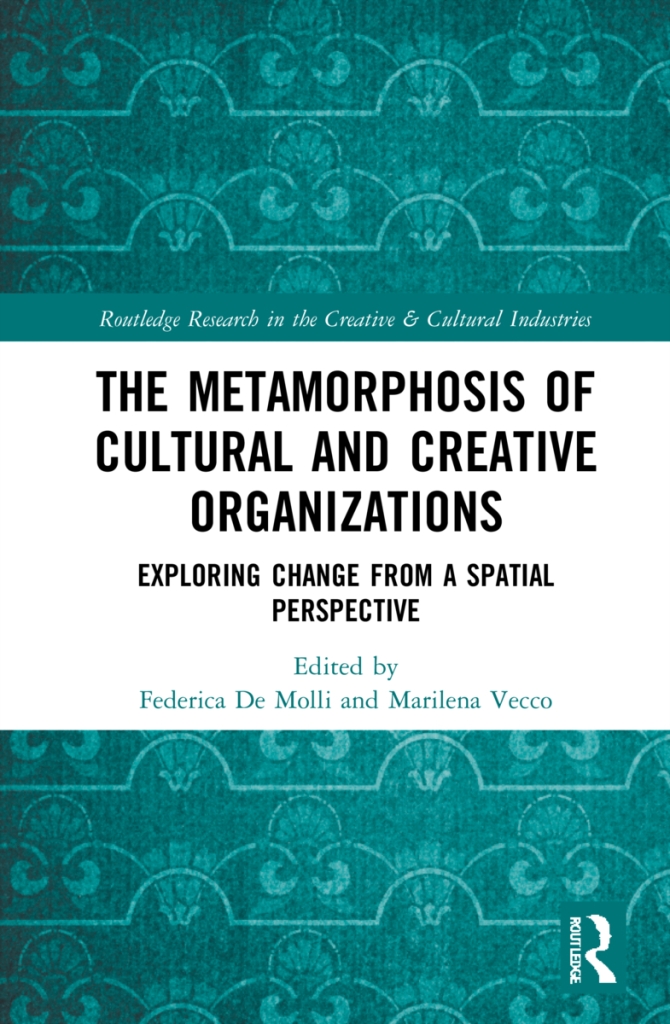Brigitte Biehl and I have continued our exploration of “atmospheres” by examining how spaces and their atmospheres are dynamically produced through people’s action and interaction. Our analysis is based on studies at a museum and a techno club that due to the global pandemic was transformed into an art exhibition. The research was published in the book “The Metamorphosis of Cultural and Creative Organizations” edited by Federica De Molli and Marilena Secco.
Atmospheres as dynamic configurations: The case of a museum and a techno club by Brigitte Biehl & Dirk vom Lehn
Abstract: Organizational spaces and museum exhibitions are often designed to encompass people with a given atmosphere that encourage particular behavioural and cognitive responses. In a leisure context such as techno clubs, people are given the opportunity to have experiences that are site-specific standing in a particular a nightlife tradition. Similarly, in museums people encounter objects and artefacts displayed to allow them to have an aesthetic experience. In our chapter, we will draw on Gernot Böhme’s aesthetic theory, developing his notion of atmosphere and aesthetic work. We explore how spaces and their atmospheres are dynamically produced through people’s action and interaction. Our investigation will consider atmospheres as ongoing, as continually produced and transformed through people’s “aesthetic work”, i.e. actions, movements, and embodied interaction influenced by their moods, emotions and energy, as well as their memories and past experiences. Based on our analysis we will argue that leisure and cultural experiences arise within the spaces and atmosphere that people co-create through their presence and activities. We draw on examples from the cultural and creative industries: the Victoria and Albert Museum in London and Berghain techno club in Berlin, which during the global pandemic in 2020 was transformed into an art exhibition “Studio Berlin” in co-operation with Boros art foundation.

Table of Contents
Preface Antonio Strati
1. Cultural and creative organizations’ space: An introduction
Federica De Molli and Marilena Vecco
Part I – Aesthetic
2. Atmosphere in cultural organisations: A circumplex model of affective atmospheres
Christian Julmi
3. Atmospheres as dynamic configurations: The case of a museum and a techno club
Brigitte Biehl (Biehl-Missal) and Dirk vom Lehn
4. Creative spaces in higher education
Tatiana Chemi
5. ‘Being t/here apart-together’: Co-creative work(ing) in bodily-digital ‘inter-places’
Wendelin Küpers and Stephan Sonnenburg
Part II – Symbolic
6. Organizational spatial transformation: The case of the un-festival
Grant Hall and Ruth Rentschler
7. The spatial production of festivals: Ritualization, liminality and performativity
Leonore van den Ende
8. Artistic space: Painting and the making of space
Eleonora Montagner and Alvise Favotto
9. Museum spaces and changes
Graham Black
Part III – Instrumental
10. Space technologies and cultural organizations
Daniel Ericsson
11. The regional context in entrepreneurial finance of cultural business: Urban versus rural space for creative and cultural entrepreneurship
Elmar D. Konrad and Max Höllen
12. Community-driven cultural spaces and the COVID-19 pandemic
Matina Magkou, Laura Huret and Vincent Lambert
13. The expansion of virtual spaces of superstar and star museums during the COVID-19 lockdown
Anne Gombault and Oihab Allal-Cherif
14. Future perspectives for research on creative and cultural sectors using a spatial approach
Federica De Molli
